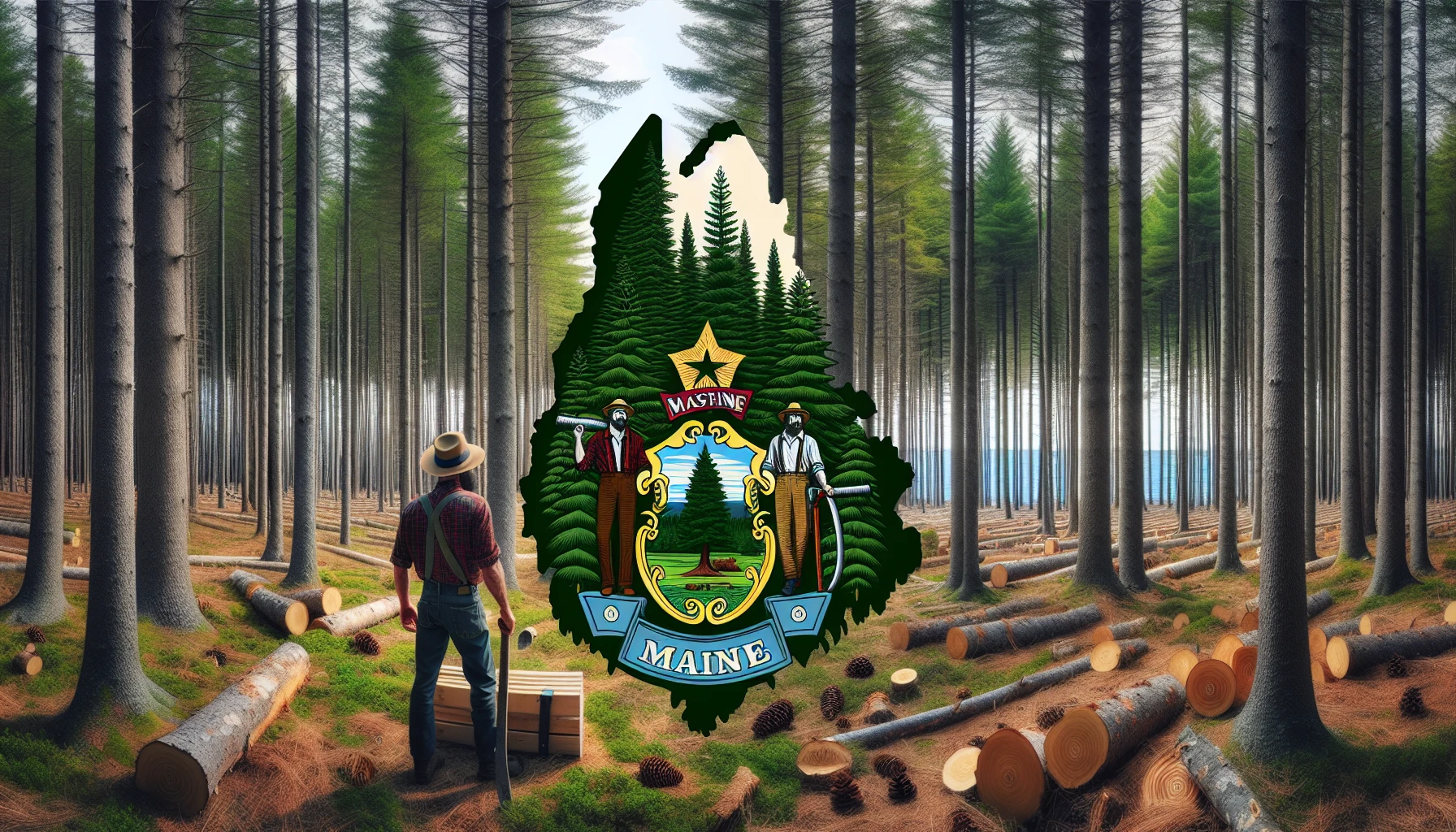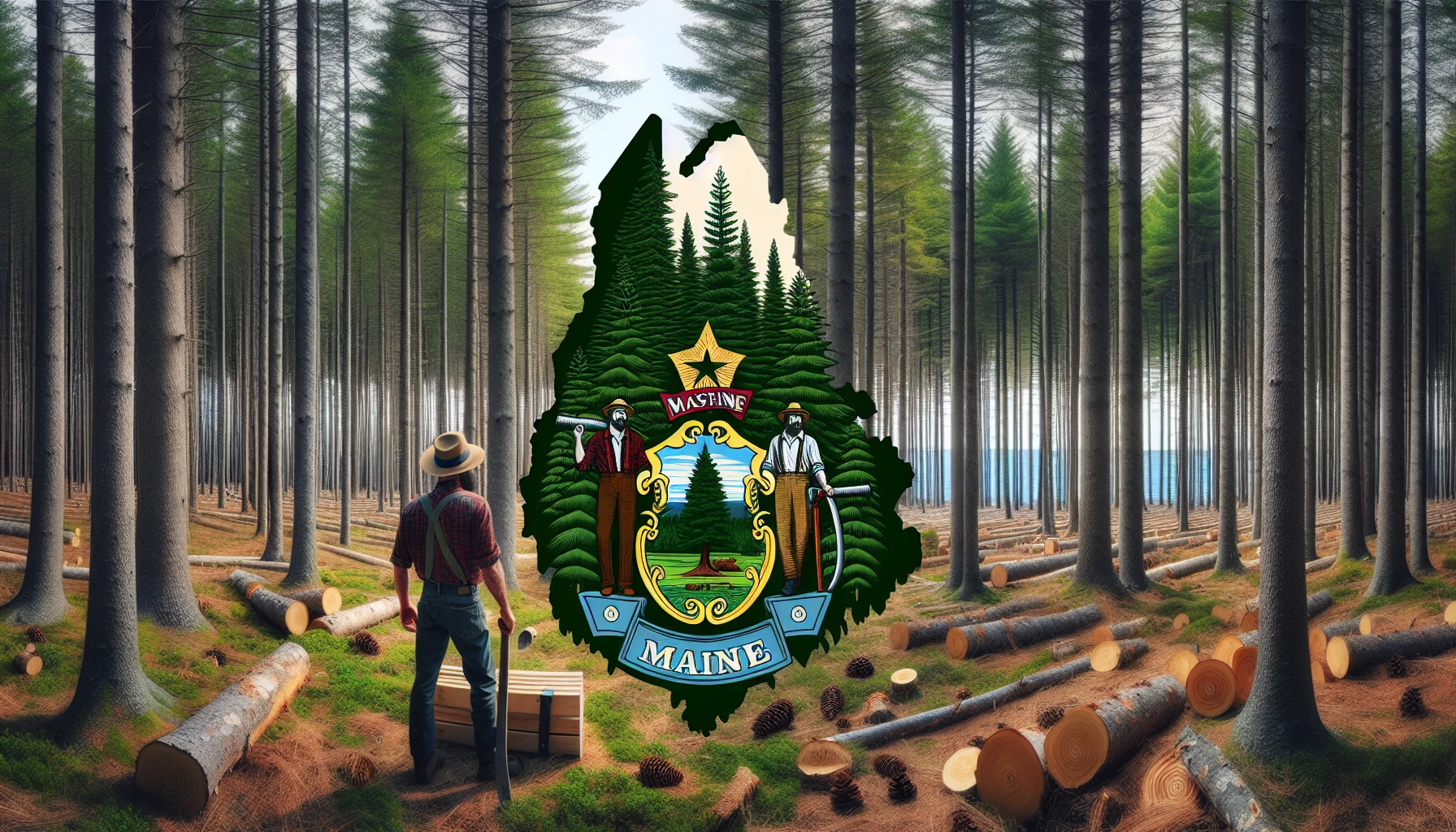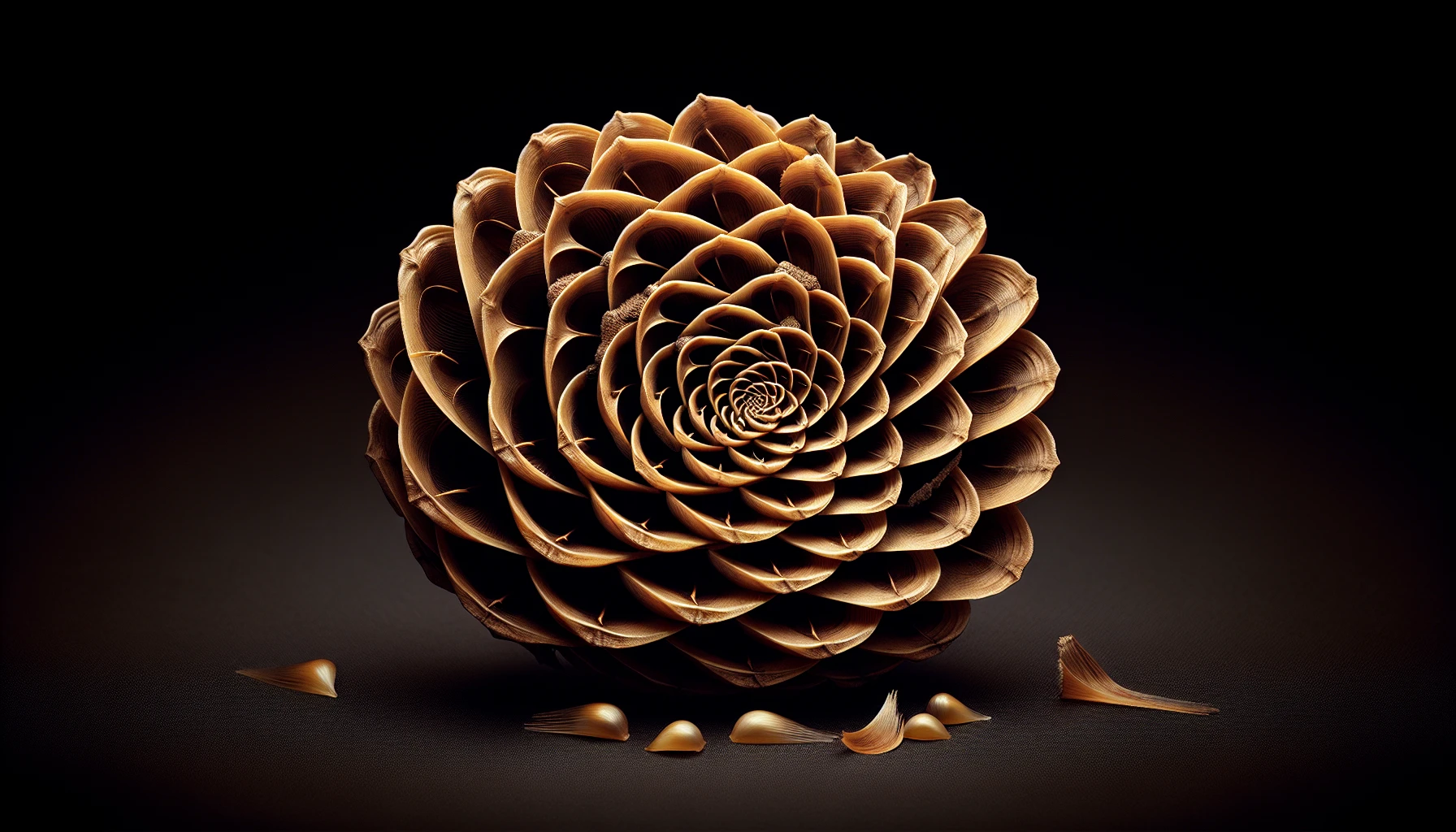The Charm of the Maine State Flower
Nestled in the beauty of the northeastern United States, Maine boasts a state flower that stands apart from the rest: the Maine state flower, the intriguing White Pine Cone and Tassel. This flower tells a story of Maine's rich history, connection to the land, and appreciation for the simple elegance of nature. Join us as we journey through the fascinating tale of this unique emblem and its significance in Maine's culture and art.

Maine State Flowers
- Maine's state flower, the White Pine Cone and Tassel, symbolizes its deep connection to the timber industry and colonial history.
- The Eastern White Pine is a symbol of strength found throughout the northeastern US & eastern Canada, with specimens living up to 500 years.
- Maine celebrates its natural beauty through pine cone tattoos & home décor projects honoring the state's enduring spirit.
The Unconventional Beauty: Maine's State Flower

Amidst a sea of colorful petals and sweet fragrances, Maine's state flower, the White Pine Cone and Tassel, emerges as an unconventional beauty. The cone and Tassel of the Eastern White Pine tree, the largest conifer in North America, embody the spirit of the Pine Tree State. Its historical significance dates back to colonial times when the tree's strong, straight trunks were used to construct masts for ships in the British Royal Navy.
In 1895, Maine embraced its widespread reputation as the Pine Tree State, officially selecting the White Pine Cone and Tassel as its state flower. This unique choice reflects the state's deep connection to the timber industry and the lasting impact it has had on the region's growth and prosperity.
The Official Selection
The journey to adopt the White Pine Cone and Tassel as Maine's state flower began in 1895 when the Legislature initiated the selection process. The cone and Tassel were the sole contenders, inspired by their use in the National Garland of Flowers at the 1893 World's Fair.
By choosing this distinctive emblem, Maine proudly showcased its cherished pine tree heritage, setting its state flower apart from the more traditional choices of other states.
The Significance of Pine Trees in Maine

Apart from being the state flower, pine trees, especially the Eastern White Pine, have significantly influenced Maine's economy and identity. The timber industry in the eastern United States and Canada has long relied on the Eastern White Pine for its exceptional wood and rapid growth rate.
This iconic tree has become a symbol of Maine's resilience and connection to its natural resources, further solidifying its place as the state's floral emblem.
The Eastern White Pine: A Closer Look
The Eastern White Pine (Pinus strobus) is an impressive sight, reaching heights of up to 230 feet and living for as long as 500 years. Its towering presence is a constant reminder of the state's rich history and the enduring spirit of its people. The Eastern White Pine prospers in well-drained, acidic soil with a pH level of 6.5 or below. Its preference for cooler, more humid climates makes Maine an ideal habitat for this magnificent tree.
Found throughout the northeastern United States and eastern Canada, the Eastern White Pine is a symbol of strength and longevity. Its abundant presence throughout the region has contributed to the stability and resilience of the North Woods ecosystem, with some specimens reaching an astonishing 450 years of age.
Size and Growth
The Eastern White Pine is known for its speedy growth, shooting up to 24 inches each year. On optimal sites, the oldest specimens can reach impressive heights of 120 to 150 feet, dwarfing many other tree species in the area. The tree's impressive size and rapid growth have made it a valuable resource in the timber industry and a cherished symbol of Maine's natural beauty.
Distribution and Habitat
Thriving in upland, mesic sand, or loam sites, the Eastern White Pine prefers the cool, moist environments found in Maine. Its native habitat extends throughout various regions within the United States, including:
- Arkansas
- Connecticut
- Delaware
- Georgia
- Iowa
- Illinois
- Indiana
- Kentucky
- Massachusetts
- Maryland
- Michigan
- Minnesota
- North Carolina
- New Hampshire
- New Jersey
- New York
- Ohio
- Pennsylvania
- Rhode Island
- South Carolina
- Tennessee
- Virginia
- Vermont
The tree's ability to thrive in varied regions demonstrates its enduring resilience and strength.
The Pine Cone and Tassel: Understanding the Structure

The Pine Cone and Tassel serve as unique structures in the reproduction process of the Eastern White Pine. The Pine Cone is a gymnosperm, producing naked seeds not enclosed in an ovary, while the Tassel is a pollen-producing catkin. These distinct structures play different yet equally important roles in the tree's life cycle, ensuring the continuation of the species.
The Pine Cone's sturdy, overlapping sections safeguard the seeds from the external environment, and the scales open under dry conditions, enabling wind dispersal of the seeds. Meanwhile, the Tassel discharges pollen for fertilization, playing a vital role in the reproductive process. Together, the Pine Cone and Tassel contribute to the genetic diversity of Eastern White Pines through natural variation and hybridization.
The Pine Cone: Seed-Bearing Gymnosperm
Gymnosperms, such as the Eastern White Pine, reproduce through exposed seeds or ovules rather than flowers and fruits found in angiosperms. The Pine Cone's structure, enclosing seeds between each cone scale, serves as the female part of the plant, while the male parts produce pollen for fertilization.
This unique reproductive process sets the Eastern White Pine apart from other tree species and contributes to its resilience and adaptability.
The Tassel: Pollen-Producing Catkin
The Tassel, a slender, cylindrical catkin, plays a crucial role in the life cycle of the Eastern White Pine. Producing pollen through microsporangia, the Tassel ensures the fertilization of the female cones, ultimately leading to the development of seeds.
The Tassel's function in the reproductive process helps maintain the Eastern White Pine's genetic diversity and ensure the continuation of this iconic tree species.
Comparing Maine's State Flower with Other New England Floral Emblems
Maine's White Pine Cone and Tassel, the state flower of Maine, distinguish themselves from other New England state flowers, which commonly present more typical floral symbols. The Apple Blossom, New Hampshire's state flower, and the Mountain Laurel, Connecticut's state flower, represent the natural beauty and agricultural heritage of their respective states. However, the unique charm and historical significance of Maine's state flower are unique.
The Apple Blossom represents New Hampshire's apple orchards and the state's farming heritage, while the Mountain Laurel signifies Connecticut's natural allure and resilience. These flowers, though undeniably beautiful, lack the distinctive character and connection to state history found in Maine's White Pine Cone and Tassel. The choice of the Pine Cone and Tassel as Maine's state flower truly sets it apart as a symbol of the state's identity and connection to its natural resources.
Apple Blossom (New Hampshire)
Though not officially selected as New Hampshire's state flower, the Apple Blossom remains a symbol of the state's agricultural heritage. Its delicate pink and white petals adorn the apple orchards during spring, attracting pollinators and ensuring a bountiful harvest.
The Apple Blossom's association with love and motherhood in Celtic culture adds to its charm, making it a popular choice for expressing appreciation and affection.
Mountain Laurel (Connecticut)
Connecticut's state flower, the Mountain Laurel, showcases the state's natural beauty with its vibrant pink, red, and white blossoms. Blooming in late spring and early summer, the Mountain Laurel symbolizes triumph, accomplishment, and determination, making it a fitting emblem for Connecticut's resilient spirit.
Its picturesque flowers serve as a reminder of the state's rich history and connection to the land, as they are the official state flower and state floral emblem.
The White Pine Cone in Maine Culture and Art

The White Pine Cone has influenced various art forms and cultural expressions in Maine, spurring innovative designs and manifestations of state pride. From tattoos to home decorations, the Pine Cone acts as a flexible emblem for Mainers to demonstrate their affection for their state and its abundant history.
Pine Cone-themed tattoos are a popular way for Mainers to express their connection to nature and pride in their state. Incorporating the state flower into tattoo designs, artists capture the essence of Maine's natural beauty and enduring spirit.
Simultaneously, Pine Cones can also be spotted in imaginative home decorations, including wreaths, centerpieces, and crafts. These rustic and natural accents bring the charm of Maine's forests into the home, celebrating the state's unique identity.
Pine Cone-Inspired Tattoos
Tattoos featuring Pine Cones are a distinctive way for Mainers to express their state pride and connection to its natural beauty. Designs range from realistic renderings of the White Pine Cone to abstract interpretations, often combined with other symbols of Maine, such as the state bird the chickadee. These tattoos serve as a personal reminder of the state's rich history and the enduring spirit of its people.
Creative Home Décor with Pine Cones
Pine Cones offers a versatile and natural element for home décor in Maine. From DIY fall decorations to holiday-themed living rooms, Pine Cones can be incorporated into various crafts and projects to create a rustic and cozy atmosphere.
Pine Cone artwork can also adorn walls, acting as a decorative feature and a reminder of the state's respected Pine Tree legacy.
The Maine State Flower
The White Pine Cone and Tassel stand as a unique and fitting symbol for the state of Maine. Rich in history, deeply connected to the state's identity, and inspiring various forms of art and culture, the Pine Cone and Tassel capture the essence of Maine's natural beauty and resilience. As we celebrate this unconventional state flower, let us remember the timeless connection between the people of Maine and the majestic Eastern White Pine.
Frequently Asked Questions:
What is the state flower and bird of Maine?
Maine's official state flower is the white pine cone and Tassel, and its official state bird is the black-capped chickadee.
Why is a pine cone a flower?
Pine cones are the vessels that contain the seeds of gymnosperms and, as such, can be considered a type of flower. When mature, these cones open and release the seeds inside, mimicking the natural flowering process.
What is the state wildflower of Maine?
Maine, famously known as the 'Pine Tree State,' adopted the White Pine Cone and Tassel (Pinus strobus) as its official state flower in 1895. As a symbol of the state's importance to the timber industry, the White Pine Cone and Tassel fittingly reflect Maine's landscape and heritage.
What's Maine's state tree?
Maine is officially known as the 'Pine Tree State,' and its state tree is the Eastern white pine. He was selected by the Maine legislature in 1895 as the official floral emblem of the state.
What is the state flower of Maine?
Maine's official state flower is the White Pine Cone and Tassel.
Recent Posts
Year : 2024
Year : 2023
Year : 2022

